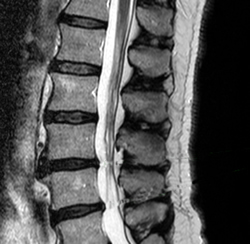NPR stations in San Francisco and Los Angeles crowdsourced healthcare cost data from listeners to reveal arbitrary pricing of medical services
Over the past two years, Dark Daily has published a number of stories dealing with price transparency, or lack of it, most of which involved government agencies or nonprofits concerned about the high cost of healthcare services. This latest effort to shine a light on healthcare pricing, however, comes from National Public Radio (NPR).
San Francisco’s NPR station, KQED, initiated PriceCheck, an innovative project designed to reveal just how arbitrary medical pricing is in California, in June 2014. KQED partnered with Los Angeles’ NPR station, KPCC, and ClearHealthCosts.com, a New York City start-up that publishes a national list of low to high charges for common healthcare services, to crowdsource healthcare cost data.
The two NPR stations appealed to listeners to share the charges they paid for four medical services: mammograms, lower-back MRIs, IUDs, and diabetes testing. Hundreds of people responded to share prices they paid for these services, and thousands of people looked up prices on ClearHealthCosts.com.
PriceCheck Compares ‘Apples-to-Apples’
The project team created an online tool to make it easy for people to share prices, according to the JAMA article, which noted that the tool was designed to “obtain consistent, apples-to-apples prices every time.” They started with mammograms because, according to a statement KQED released on the station’s “The California Report” website, “it is a screening test that many women have at least every other year. Because it is a test that can be scheduled, women could, in theory, shop around for the best price.”
During the months following the initial trial run of PriceCheck, consumer pricing for additional procedures were input into the PriceCheck form by hundreds of patients. The results of the crowdsourced study were published in JAMA Internal Medicine in January 2015. The study revealed the vast differences healthcare consumers paid in California for common procedures like mammograms, MRIs, and IUDs. Prices ranged from hundreds of dollars for the insured to thousands of dollars for those who self-paid.

Lisa Aliferis, Health Editor, KQED News, is the founding editor of KQED’s State of Health blog. Aliferis penned the JAMA Internal Medicine viewpoint article, in which NPR published its findings. (Photo courtesy of KQED Radio.)
NPR published the results and noted how difficult it is to decipher what the actual price is for medical services. One reason is because healthcare providers negotiate varied prices with different healthcare insurers. There is also no existing database where consumers can look up this information. JAMA Internal Medicine published a viewpoint article in its January 2015 issue to inform doctors of NPR’s findings.
Use of Crowdsourcing to Gather Healthcare Data Is New Phenomenon
Crowdsourcing healthcare studies is controversial, but its value is the thought-provoking statistics it generates. Here’s how PriceCheck worked: when users selected healthcare procedures they had undertaken from a drop-down menu, the system entered the Current Procedure Terminology (CPT) code for that procedure into the ClearHealthCosts.com database.
Patients then entered the prices they were charged. Those with no insurance entered the self-pay amount, while those with insurance submitted what the insurer paid and their copay amount. All costs were then fed into the database and collected by ClearHealthCosts.com.
Costs for Mammograms and Lower-back MRIs Vary Greatly
About 38 million mammograms are performed yearly. NPR noted that California-based insurers paid between $128 and $694 for this test. One woman in Los Angeles reported that her insurer paid $600 more than the lowest cost for this test in the region. “It was a friendly technician, but I don’t think that’s worth 600 extra dollars,” she commented on PriceCheck.
The divergence in pricing for lower-back MRIs was even greater, particularly for self-pay patients. One listener reported paying $6,221 for this test at an academic medical center. Commercial insurers paid from $467 to $1,567 for this test.
The lowest price paid was $255 by Medicare, which was a fraction of the $2,450 another self-pay patient was charged for the same procedure. An insured person reported paying $603 at the same facility, however, this person had not yet exceeded the policy deductible.

The KQED’s PriceCheck project found that in California, a lower-back MRI (pictured above) cost between $255 (Medicare) and $6,221 (self-pay) at an academic medical center. (Photo copyright by Lower Back Pain Tool.)
New Massachusetts Law Requires Insurers to Post Prices for Procedures
While NPR team members conceded that crowdsourced data might contain errors, they contended that any push toward price transparency helps to drive discussion about this issue. They offered the example of a new Massachusetts law that requires insurers to post the most accurate price estimates possible for procedures on their websites.
This new law, which became effective October 2014, also caps healthcare prices and establishes new oversight agencies in an attempt to drive down costs, according to a report published by Governing.com. Additionally, the law requires doctors in Massachusetts to provide prices to patients who ask over the phone.
Implications of Price Transparency for Medical Laboratories
Pricing transparency has major implications for both hospital laboratories and independent medical laboratories. As the transparency trend gains steam among consumers, clinical laboratories and pathology groups would be well-served to make it possible for patients to see the lab test prices in advance of service, or at the time that a specimen is collected.
—by Patricia Kirk
Related Information:
In California, That MRI Will Cost You $255 — Or Maybe $6,221
Variation in Prices for Common Medical Tests and Procedures
KQED’s #PriceCheck Project Shows Steep Variation in Prices Paid by Health Insurers
Initial Mammogram Cost Comparisons in KQED’s PriceCheck Project
PriceCheck: Insurer Payments for IUDs Vary by $800 in California
Massachusetts Makes the Biggest Push Yet to Make Health-Care Prices Public
Clinical Pathology Labs Should Plan on Greater Transparency in Test Prices and Patient Outcomes



